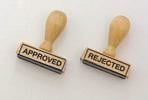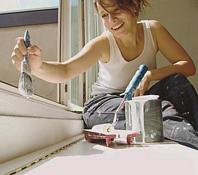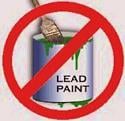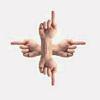NARI Letter Submitted to Senate about RRP Rule Speaks to Contractor Concerns
 In a recent letter submitted to the US Senate, NARI Executive Director Mary Busey Harris did a great job advising the EPA of critical concerns legitimate remodelers have about the EPA’s creation, enforcement and administration of the RRP Lead Rule. The letter points out that law abiding professional remodelers are particularly challenged by two considerations having to do with the additional costs related to the current rule as well as the proposed dust wipe amendment. Here is an excerpt from the letter:
In a recent letter submitted to the US Senate, NARI Executive Director Mary Busey Harris did a great job advising the EPA of critical concerns legitimate remodelers have about the EPA’s creation, enforcement and administration of the RRP Lead Rule. The letter points out that law abiding professional remodelers are particularly challenged by two considerations having to do with the additional costs related to the current rule as well as the proposed dust wipe amendment. Here is an excerpt from the letter:
"Currently, EPA estimates that more than 500,000 individuals have been trained on how to comply with LRRP. Despite EPA’s training success, we are witnessing two disturbing trends that threaten our livelihood and potentially endanger homeowners and children.
First, the cost increase for remodeling projects done in full compliance with EPA regulations is causing homeowners to hire unlicensed contractors or to do construction work themselves. This situation endangers children who may be exposed to lead caused by unsafe work practices.
Second, EPA is expected to finalize the “clearance” portion of the LRRP rules this July. NARI is concerned that EPA will lack sensitivity towards the impact pricing has on hiring licensed and certified contractors. The rules, if finalized with overly burdensome requirements, may drive up costs and exacerbate the problems we are currently witnessing – driving more homeowners towards unlicensed or unethical contractors."
 In the letter Harris points out that NARI would like to work with the Committee on Small Business & Entrepreneurship to “reiterate to EPA the impact LRRP is having on remodelers and to facilitate a better dialogue on how EPA can implement the LRRP rules in a small business-friendly way” She further goes on to suggest that; ”With the Committee’s help, remodelers and EPA officials can work towards solutions that will better inform homeowners of lead hazards, penalize unlicensed or unethical contractors, and reduce the exposure of children to lead from construction activities”
In the letter Harris points out that NARI would like to work with the Committee on Small Business & Entrepreneurship to “reiterate to EPA the impact LRRP is having on remodelers and to facilitate a better dialogue on how EPA can implement the LRRP rules in a small business-friendly way” She further goes on to suggest that; ”With the Committee’s help, remodelers and EPA officials can work towards solutions that will better inform homeowners of lead hazards, penalize unlicensed or unethical contractors, and reduce the exposure of children to lead from construction activities”
 I commend NARI for reaching out to work with government officials regarding the EPA RRP Lead Rule in a constructive and thoughtful way. I hope the Senate and the Committee on Small Business & Entrepreneurship will embrace NARI’s offer. The remodeling industry and remodelers need their voices to be heard. Even more important, EPA needs to listen if the RRP rule is to be effective and our government is truly interested in protecting America’s children as well as professional remodelers from the negative effects of the underground economy.
I commend NARI for reaching out to work with government officials regarding the EPA RRP Lead Rule in a constructive and thoughtful way. I hope the Senate and the Committee on Small Business & Entrepreneurship will embrace NARI’s offer. The remodeling industry and remodelers need their voices to be heard. Even more important, EPA needs to listen if the RRP rule is to be effective and our government is truly interested in protecting America’s children as well as professional remodelers from the negative effects of the underground economy.

 Looking for accurate information about the EPA RRP rule?
Looking for accurate information about the EPA RRP rule? 
 Banks have started to figure out that the costs and liabilities related to the EPA RRP rule can dramatically increase their costs and risks. Banks that own foreclosed properties have quickly discovered the additional costs they will incur when repairing and or renovating these properties just so they can sell them. Under the RRP rule, landlords need to become certified firms and use certified renovators when working on their properties. Banks who take possession of pre-1978 properties need to do the same and or only hire certified firms to perform the work for them. As a result of the RRP rule, many pre-1978 foreclosed homes are now worth less than they were valued prior to the April 22, 2010 date the new EPA RRP rule took effect.
Banks have started to figure out that the costs and liabilities related to the EPA RRP rule can dramatically increase their costs and risks. Banks that own foreclosed properties have quickly discovered the additional costs they will incur when repairing and or renovating these properties just so they can sell them. Under the RRP rule, landlords need to become certified firms and use certified renovators when working on their properties. Banks who take possession of pre-1978 properties need to do the same and or only hire certified firms to perform the work for them. As a result of the RRP rule, many pre-1978 foreclosed homes are now worth less than they were valued prior to the April 22, 2010 date the new EPA RRP rule took effect.  Banks are also more likely to end up with additional foreclosed properties due to the RRP rule. For struggling pre-1978 homeowners and investors, perhaps already upside-down on their mortgages, the additional repair and maintenance costs related to the EPA RRP rule may be just one more reason to justify letting their properties go to foreclosure. Finding out about the potential additional drop in equity value in the property due to the EPA RRP rule may become a second reason to let upside down properties go to foreclosure.
Banks are also more likely to end up with additional foreclosed properties due to the RRP rule. For struggling pre-1978 homeowners and investors, perhaps already upside-down on their mortgages, the additional repair and maintenance costs related to the EPA RRP rule may be just one more reason to justify letting their properties go to foreclosure. Finding out about the potential additional drop in equity value in the property due to the EPA RRP rule may become a second reason to let upside down properties go to foreclosure. As mentioned above, banks have already started to become aware of the EPA RRP rule due to foreclosures. They are also using this knowledge when considering loans. If loaning money to home buyers for purchases and or to property owners for renovations, banks will likely want to know if a pre-1978 property contains lead and if it does how it might affect the value of the home. A home needing significant repairs or maintenance after purchase will likely have a much lower value if the work will fall under the EPA RRP rule. Such scenarios might have a few different effects ranging from requiring more money down, higher interest rates, lower appraised value of the property as compared to the selling price and or ultimately denying to loan money on the property.
As mentioned above, banks have already started to become aware of the EPA RRP rule due to foreclosures. They are also using this knowledge when considering loans. If loaning money to home buyers for purchases and or to property owners for renovations, banks will likely want to know if a pre-1978 property contains lead and if it does how it might affect the value of the home. A home needing significant repairs or maintenance after purchase will likely have a much lower value if the work will fall under the EPA RRP rule. Such scenarios might have a few different effects ranging from requiring more money down, higher interest rates, lower appraised value of the property as compared to the selling price and or ultimately denying to loan money on the property.  If home buyers aren’t aware of lead paint or the implications of buying a property that has or may have lead paint, a good home inspector may likely provide such knowledge.
If home buyers aren’t aware of lead paint or the implications of buying a property that has or may have lead paint, a good home inspector may likely provide such knowledge.  Home inspectors will help cause compliance with the EPA RRP rule in a few ways. First, they will likely make home buyers aware of the fact that if built before 1978, the home may likely contain lead paint. The only way to verify if lead paint is present is to do a lead test. Inspectors can suggest their clients ask the seller if the home has been tested and if it has to obtain a copy of the required lead inspection report. Next, if the home does have lead, or it hasn’t been tested, inspectors should inform the buyers that any renovations to the home would need to be done using lead-safe work practices. This will have two effects. The first would be to let the buyer know that lead-safe work practices are required should they be planning any renovations after purchasing the home. Second, and most critical, would be to verify that any recent renovations done at the home were done using lead-safe work practices and to verify this by making sure who ever did the work did it in compliance with the EPA RRP requirements. Again, requesting a copy of the
Home inspectors will help cause compliance with the EPA RRP rule in a few ways. First, they will likely make home buyers aware of the fact that if built before 1978, the home may likely contain lead paint. The only way to verify if lead paint is present is to do a lead test. Inspectors can suggest their clients ask the seller if the home has been tested and if it has to obtain a copy of the required lead inspection report. Next, if the home does have lead, or it hasn’t been tested, inspectors should inform the buyers that any renovations to the home would need to be done using lead-safe work practices. This will have two effects. The first would be to let the buyer know that lead-safe work practices are required should they be planning any renovations after purchasing the home. Second, and most critical, would be to verify that any recent renovations done at the home were done using lead-safe work practices and to verify this by making sure who ever did the work did it in compliance with the EPA RRP requirements. Again, requesting a copy of the  Additionally, if the work was done by the home owners themselves, or perhaps was done illegally by a non-complaint contractor, the only way to find out if the work may have contaminated the home with lead would be to have the home tested by a
Additionally, if the work was done by the home owners themselves, or perhaps was done illegally by a non-complaint contractor, the only way to find out if the work may have contaminated the home with lead would be to have the home tested by a  Home buyers, investors and realtors will likely drive awareness about lead and the new EPA RRP rule up. But, at the same time, such awareness will drive the values of pre-1978 properties down. If unaware of the additional considerations of risks, liability and costs related to the RRP, realtors will likely walk into a hornet’s nest.
Home buyers, investors and realtors will likely drive awareness about lead and the new EPA RRP rule up. But, at the same time, such awareness will drive the values of pre-1978 properties down. If unaware of the additional considerations of risks, liability and costs related to the RRP, realtors will likely walk into a hornet’s nest.  A buyer’s willingness to purchase a property that contains lead will definitely be effected as a result of the RRP rule. First, once word gets out, the health risks of lead paint and related liabilities will cause many buyers to bypass any consideration of pre-1978 properties. As the supply goes up, the prices of these properties will go down. Also, investors won’t like the added costs of owning such properties, particularly if the value of those properties is less likely to increase over time as compared to properties without lead. This too will lower property values to a point where the value of certain properties may only be in the land they sit on, less the cost to get rid of the original lead infused structure.
A buyer’s willingness to purchase a property that contains lead will definitely be effected as a result of the RRP rule. First, once word gets out, the health risks of lead paint and related liabilities will cause many buyers to bypass any consideration of pre-1978 properties. As the supply goes up, the prices of these properties will go down. Also, investors won’t like the added costs of owning such properties, particularly if the value of those properties is less likely to increase over time as compared to properties without lead. This too will lower property values to a point where the value of certain properties may only be in the land they sit on, less the cost to get rid of the original lead infused structure. As a side note, realtors as a whole are typically much more professional and proactive than contractors. The majority of them are also dues paying members of one single, well funded and very powerful trade association that represents their interests. I predict that once a good number of realtors catch wind of and understand how the RRP will affect their industry; their association will be working to modify the rule in their favor. This might be of benefit to renovators, but just as easily, it might not.
As a side note, realtors as a whole are typically much more professional and proactive than contractors. The majority of them are also dues paying members of one single, well funded and very powerful trade association that represents their interests. I predict that once a good number of realtors catch wind of and understand how the RRP will affect their industry; their association will be working to modify the rule in their favor. This might be of benefit to renovators, but just as easily, it might not. Many contractors seeking to comply with the new EPA RRP rule are reporting concerns and challenges about finding trade partners who are willing to operate in compliance. Many renovators have told me that their trade partners have flat out refused to get their businesses and workers certified. Others have said their trade partners have committed to do so but have been slow to get it done due to the related costs. This has become quite an opportunity for some trade partners who have become certified and are marketing their certifications and services to general contractors. Several are actually offering to sub-contract the set-up, containment, demo, clean-up, cleaning verification and all related and required documentation for general contractors.
Many contractors seeking to comply with the new EPA RRP rule are reporting concerns and challenges about finding trade partners who are willing to operate in compliance. Many renovators have told me that their trade partners have flat out refused to get their businesses and workers certified. Others have said their trade partners have committed to do so but have been slow to get it done due to the related costs. This has become quite an opportunity for some trade partners who have become certified and are marketing their certifications and services to general contractors. Several are actually offering to sub-contract the set-up, containment, demo, clean-up, cleaning verification and all related and required documentation for general contractors. Who will take care of the notification requirements and documentation of same before the job begins? Under the rule, either can do so, but the business under contract with the property owner must maintain the required documentation.
Who will take care of the notification requirements and documentation of same before the job begins? Under the rule, either can do so, but the business under contract with the property owner must maintain the required documentation. The first time a RRP fine is accessed for a violation the finger pointing will start, causing one or both businesses to get serious about certification and compliance. The first time a renovator is sued by a client or neighbor as a result of the actions of a trade partner, the tactics used by the lawyers will cause both businesses to have a new and different outlook on RRP compliance, insurance coverage amounts and indemnification clauses.
The first time a RRP fine is accessed for a violation the finger pointing will start, causing one or both businesses to get serious about certification and compliance. The first time a renovator is sued by a client or neighbor as a result of the actions of a trade partner, the tactics used by the lawyers will cause both businesses to have a new and different outlook on RRP compliance, insurance coverage amounts and indemnification clauses.  To confuse matters even further, under their definition of the difference between an employee and an independent contractor, the IRS says that a contractor cannot supervise the work or workers of a sub contractor. Doing so might result in the IRS labeling the sub contractor as an employee. If this were to happen it could trigger addition payroll taxes and workers compensation costs for the general contractor.
To confuse matters even further, under their definition of the difference between an employee and an independent contractor, the IRS says that a contractor cannot supervise the work or workers of a sub contractor. Doing so might result in the IRS labeling the sub contractor as an employee. If this were to happen it could trigger addition payroll taxes and workers compensation costs for the general contractor. Many liability insurance policies do not cover lead poisoning or contamination. Renovators should be sure they are working with an agent who is up on the EPA RRP rule and should sit down with their agent to review their coverage needs and options.
Many liability insurance policies do not cover lead poisoning or contamination. Renovators should be sure they are working with an agent who is up on the EPA RRP rule and should sit down with their agent to review their coverage needs and options.  Increased risk of liability due to lead awareness as well as the government mandated certification requirements are likely to affect a renovator’s ability to get a policy as well as the premium charged by carriers who offer coverage. Tom told me he predicts that existing policies will not be renewed unless a renovator can show they are certified firms and use certified renovators to oversee the work their company performs. He also predicts insurance carriers will start requiring the insured’s proof of compliance with the rule as well as proof of compliance and insurance coverage for the trade partners the insured renovator works with. Tom stressed that this would be for both liability as well as workers compensation insurance coverages. He said that even if they are self-employed, insurance carriers will likely require all trade partners have their own workers compensation policies as a way to prevent injured or poisoned trade partners from claiming against the general contractor’s policy.
Increased risk of liability due to lead awareness as well as the government mandated certification requirements are likely to affect a renovator’s ability to get a policy as well as the premium charged by carriers who offer coverage. Tom told me he predicts that existing policies will not be renewed unless a renovator can show they are certified firms and use certified renovators to oversee the work their company performs. He also predicts insurance carriers will start requiring the insured’s proof of compliance with the rule as well as proof of compliance and insurance coverage for the trade partners the insured renovator works with. Tom stressed that this would be for both liability as well as workers compensation insurance coverages. He said that even if they are self-employed, insurance carriers will likely require all trade partners have their own workers compensation policies as a way to prevent injured or poisoned trade partners from claiming against the general contractor’s policy.  One other area that will likely be of concern is lead coverage in policies for landlords who own pre-1978 properties. Here too, compliance with RRP rules and documentation of work practices used for renovations and repairs will likely become required conditions of obtaining and keeping coverage. The EPA RRP rule may also cause an increase in insurance coverage on properties built prior to 1978, for landlords and maybe even home owners.
One other area that will likely be of concern is lead coverage in policies for landlords who own pre-1978 properties. Here too, compliance with RRP rules and documentation of work practices used for renovations and repairs will likely become required conditions of obtaining and keeping coverage. The EPA RRP rule may also cause an increase in insurance coverage on properties built prior to 1978, for landlords and maybe even home owners.
 Second, the warning signs and barriers required to be put in place around exterior and common area containment areas will have a similar effect of raising concern. Unless properly educated about their options and about lead-safe work practices, neighbors and the parents of children attending child occupied facilities will again suffer from ignorance about lead. Many will likely react out of fear. This fear may potentially result in reporting a renovator and causing an inspection, even if the renovation work is being done within compliance.
Second, the warning signs and barriers required to be put in place around exterior and common area containment areas will have a similar effect of raising concern. Unless properly educated about their options and about lead-safe work practices, neighbors and the parents of children attending child occupied facilities will again suffer from ignorance about lead. Many will likely react out of fear. This fear may potentially result in reporting a renovator and causing an inspection, even if the renovation work is being done within compliance.  Remember, as a business you are guilty until you prove yourself innocent at your own expense. An OSHA and or RRP inspector will likely be able to find at least one violation of some rule if they show up at one of your jobsites. Some inspectors may even feel it is their obligation to find a violation. The cost to defend yourself might be as high as the cost of any fines, so even if you win you lose. In Massachusetts, the Department of Occupational Safety (DOS) is already collaborating with OSHA regarding what to do if either finds a violation that should be referred to the other. Oh, and don’t forget those neighbors who have a bone to pick with your customer, have nothing else to do all day, and or are just plain paranoid.
Remember, as a business you are guilty until you prove yourself innocent at your own expense. An OSHA and or RRP inspector will likely be able to find at least one violation of some rule if they show up at one of your jobsites. Some inspectors may even feel it is their obligation to find a violation. The cost to defend yourself might be as high as the cost of any fines, so even if you win you lose. In Massachusetts, the Department of Occupational Safety (DOS) is already collaborating with OSHA regarding what to do if either finds a violation that should be referred to the other. Oh, and don’t forget those neighbors who have a bone to pick with your customer, have nothing else to do all day, and or are just plain paranoid. In addition to the OSHA rules contractors should already have been aware of related to worker safety, the EPA RRP rule has added yet additional OSHA concerns for renovators. One for example is working on a surface covered with plastic. OSHA considerations related to working on plastic are not part of the curriculum delivered during the required EPA certified renovator training. Due to the absence of this information, the EPA is essentially leaving it up to renovators to become aware of such considerations on their own. Once aware, renovators must seek out the information they need and adjust their work practices accordingly to avoid fines from OSHA should they get randomly inspected. Or worse, have a worker accident.
In addition to the OSHA rules contractors should already have been aware of related to worker safety, the EPA RRP rule has added yet additional OSHA concerns for renovators. One for example is working on a surface covered with plastic. OSHA considerations related to working on plastic are not part of the curriculum delivered during the required EPA certified renovator training. Due to the absence of this information, the EPA is essentially leaving it up to renovators to become aware of such considerations on their own. Once aware, renovators must seek out the information they need and adjust their work practices accordingly to avoid fines from OSHA should they get randomly inspected. Or worse, have a worker accident.  This begs a few questions. First, were the authors ignorant of such considerations? Asked another way, does the left hand know what the right hand is doing? Is this another example of a breakdown in communication between very significant departments of our government charged to look out for our best interests? A second question might be; did the authors of the EPA RRP rule leave this information out of the rule for a strategic purpose? Perhaps this is just one more way to force small independent businesses out of the construction industry in favor or labor unions.
This begs a few questions. First, were the authors ignorant of such considerations? Asked another way, does the left hand know what the right hand is doing? Is this another example of a breakdown in communication between very significant departments of our government charged to look out for our best interests? A second question might be; did the authors of the EPA RRP rule leave this information out of the rule for a strategic purpose? Perhaps this is just one more way to force small independent businesses out of the construction industry in favor or labor unions.  Of bigger concern should be the distribution of misinformation at the certified renovator training. For example, using the sample signage included in the EPA approved training manual (required to be posted outside contained work areas), might just get you in trouble with OSHA. First off the RRP rule requires the use of a “warning” sign, but the sample sign is a “caution” sign. OSHA considers a warning sign to be a stronger message than a caution sign, and has rules dictating when and how to choose one versus the other.
Of bigger concern should be the distribution of misinformation at the certified renovator training. For example, using the sample signage included in the EPA approved training manual (required to be posted outside contained work areas), might just get you in trouble with OSHA. First off the RRP rule requires the use of a “warning” sign, but the sample sign is a “caution” sign. OSHA considers a warning sign to be a stronger message than a caution sign, and has rules dictating when and how to choose one versus the other.  Variances in the rule requirements, from the EPA RRP rule and also from state to state, will make it difficult for renovators to understand the differences and keep up with amendments made by each entity. Renovators working in more than one state many have to become certified firms in each state they operate in and or also with the EPA. Are renovators better off if their states write a better thought out rule? Would renovators be better served if there was just one well written rule for everyone to follow? I predict that confusion may likely contribute to violations and fines for these renovators.
Variances in the rule requirements, from the EPA RRP rule and also from state to state, will make it difficult for renovators to understand the differences and keep up with amendments made by each entity. Renovators working in more than one state many have to become certified firms in each state they operate in and or also with the EPA. Are renovators better off if their states write a better thought out rule? Would renovators be better served if there was just one well written rule for everyone to follow? I predict that confusion may likely contribute to violations and fines for these renovators.  In July of this year Massachusetts took over administration and enforcement of the RRP rule.
In July of this year Massachusetts took over administration and enforcement of the RRP rule.  The MA DOS has also started conducting on-site inspections. Though most inspections are triggered by citizens reporting suspected violations, the DOS is also out in the field and is stopping by renovation projects as they come across them. In one of his recent blogs, RRP certification training provider and business coach, Mark Paskell of The Contractor Coaching Partnership, shares a
The MA DOS has also started conducting on-site inspections. Though most inspections are triggered by citizens reporting suspected violations, the DOS is also out in the field and is stopping by renovation projects as they come across them. In one of his recent blogs, RRP certification training provider and business coach, Mark Paskell of The Contractor Coaching Partnership, shares a 


